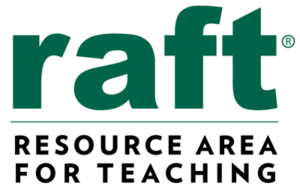Breaking it Down
Students explore how organic materials break down and decompose in this lab experiment that investigates materials, environmental factors, and variables.
Standards
Idea Sheets are cross-referenced to subjects listed in the Common Core, Next Generation Science Standards, and California Content Standards.
Science and Engineering Practices: 1. Asking Questions and Defining Problems 2. Developing and Using Models 3. Planning and Carrying Out Investigations 4. Analyzing and Interpreting Data 5. Using Mathematics and Computational Thinking 6. Constructing Explanations and Designing Solutions 7. Engaging in Argument from Evidence 8. Obtaining, Evaluating, and Communicating Information ||Next Generation Science Standards||Grade 3||Science and Engineering Practices|||Science and Engineering Practices: 1. Asking Questions and Defining Problems 2. Developing and Using Models 3. Planning and Carrying Out Investigations 4. Analyzing and Interpreting Data 5. Using Mathematics and Computational Thinking 6. Constructing Explanations and Designing Solutions 7. Engaging in Argument from Evidence 8. Obtaining, Evaluating, and Communicating Information ||Next Generation Science Standards||Grade 4||Science and Engineering Practices|||Develop a model to describe the movement of matter among plants, animals, decomposers, & the environment. [Emphasis: the idea that matter that is not food (air, water, decomposed materials in soil) is changed by plants into matter that is food.]||Next Generation Science Standards||Grade 5||Life Science||Ecosystems: Interactions, Energy, and Dynamics|||Science and Engineering Practices: 1. Asking Questions and Defining Problems 2. Developing and Using Models 3. Planning and Carrying Out Investigations 4. Analyzing and Interpreting Data 5. Using Mathematics and Computational Thinking 6. Constructing Explanations and Designing Solutions 7. Engaging in Argument from Evidence 8. Obtaining, Evaluating, and Communicating Information ||Next Generation Science Standards||Grade 5||Science and Engineering Practices|||Analyze and interpret data to provide evidence for the effects of resource availability on organisms and populations of organisms in an ecosystem. ||Next Generation Science Standards||Middle School||Life Science||Ecosystems: Interactions, Energy, and Dynamics|||Develop a model to describe the cycling of matter and flow of energy among living and nonliving parts of an ecosystem. ||Next Generation Science Standards||Middle School||Life Science||Ecosystems: Interactions, Energy, and Dynamics|||Science and Engineering Practices: 1. Asking Questions and Defining Problems 2. Developing and Using Models 3. Planning and Carrying Out Investigations 4. Analyzing and Interpreting Data 5. Using Mathematics and Computational Thinking 6. Constructing Explanations and Designing Solutions 7. Engaging in Argument from Evidence 8. Obtaining, Evaluating, and Communicating Information ||Next Generation Science Standards||Middle School||Science and Engineering Practices|||Science and Engineering Practices: 1. Asking Questions and Defining Problems 2. Developing and Using Models 3. Planning and Carrying Out Investigations 4. Analyzing and Interpreting Data 5. Using Mathematics and Computational Thinking 6. Constructing Explanations and Designing Solutions 7. Engaging in Argument from Evidence 8. Obtaining, Evaluating, and Communicating Information ||Next Generation Science Standards||High School||Science and Engineering Practices
2.b. Producers and consumers (herbivores, carnivores, omnivores, and decomposers) are related in food chains and food webs, and may compete with each other for resources in an ecosystem.||CA Science||Grade 4||02. Life Sciences||2. All organisms need energy and matter to live and grow.|||2.c. Decomposers, including many fungi, insects, and microorganisms, recycle matter from dead plants and animals.||CA Science||Grade 4||02. Life Sciences||2. All organisms need energy and matter to live and grow.|||3.d. Most microorganisms do not cause disease and many are beneficial.||CA Science||Grade 4||02. Life Sciences||3. Living organisms depend on one another and on their environment for survival.|||5. Organisms in ecosystems exchange energy and nutrients among themselves and with the environment.||CA Science||Grade 6||05. Ecology (Life Science)|||5.b. Over time, matter is transferred from one organism to others in the food web, and between organisms and the physical environment.||CA Science||Grade 6||05. Ecology (Life Science)||5. Organisms in ecosystems exchange energy and nutrients among themselves and with the environment.|||5.c. Populations of organisms can be categorized by the functions they serve in an ecosystem.||CA Science||Grade 6||05. Ecology (Life Science)||5. Organisms in ecosystems exchange energy and nutrients among themselves and with the environment.|||5.d. Different kinds of organisms may play similar ecological roles in similar biomes.||CA Science||Grade 6||05. Ecology (Life Science)||5. Organisms in ecosystems exchange energy and nutrients among themselves and with the environment.|||5.e. The number and types of organisms an ecosystem can support depends on the resources available and abiotic factors, such as quantity of light and water, range of temperatures, and soil composition.||CA Science||Grade 6||05. Ecology (Life Science)||5. Organisms in ecosystems exchange energy and nutrients among themselves and with the environment.
- Life Science
- Grades 3-5
- Grades 6-8
- Science
